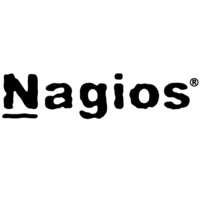Need advice about which tool to choose?Ask the StackShare community!
Nagios vs PRTG: What are the differences?
Introduction
Both Nagios and PRTG are popular network monitoring tools used by IT professionals to track and manage the health and performance of their networks.
Cost: Nagios is open-source and free to use, while PRTG comes with varying pricing plans based on the number of sensors. Nagios can be more cost-effective for smaller organizations or those with limited monitoring needs, while PRTG's pricing structure may be more suitable for larger enterprises with more extensive network monitoring requirements.
Ease of Use: PRTG offers a more user-friendly interface and quicker setup process compared to Nagios, which may require a steeper learning curve due to its more complex configuration and setup. PRTG's intuitive dashboards and automatic device discovery make it easier for users to get up and running quickly, while Nagios may require more manual configuration and customization.
Scalability: PRTG is often considered more scalable than Nagios, as it offers the flexibility to add or remove sensors and monitors as needed to accommodate a growing network. Nagios may require more manual intervention to scale up and meet the monitoring demands of a larger network, whereas PRTG allows for easier expansion and adaptation to changing network requirements.
Alerting and Notifications: PRTG's alerting system is more robust and customizable compared to Nagios, allowing users to set up notifications based on specific conditions or thresholds. Nagios also offers alerting functionality but may require more configuration and monitoring to achieve the same level of specificity and granularity as PRTG.
In Summary, Nagios is a cost-effective open-source tool with a steeper learning curve, while PRTG offers more user-friendly interfaces, scalability, and advanced alerting features at a cost.
- free open source
- modern interface and architecture
- large community
- extendable I knew Nagios for decades but it was really outdated (by its architecture) at some point. That's why Icinga started first as a fork, not with Icinga2 it is completely built from scratch but backward-compatible with Nagios plugins. Now it has reached a state with which I am confident.
Cons of PRTG
- Poor search capabilities1
- Graphs are static1
- Running on windows1











